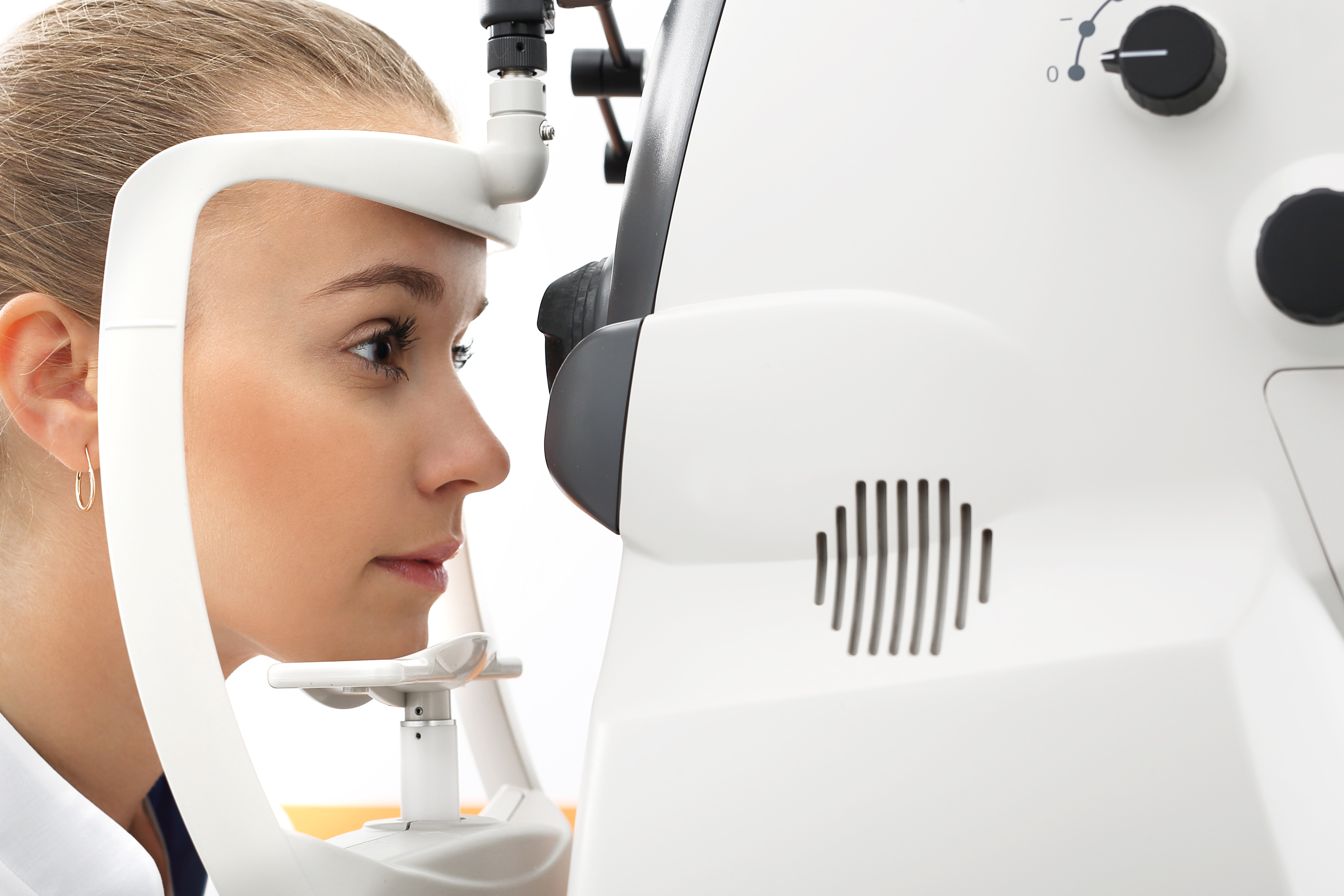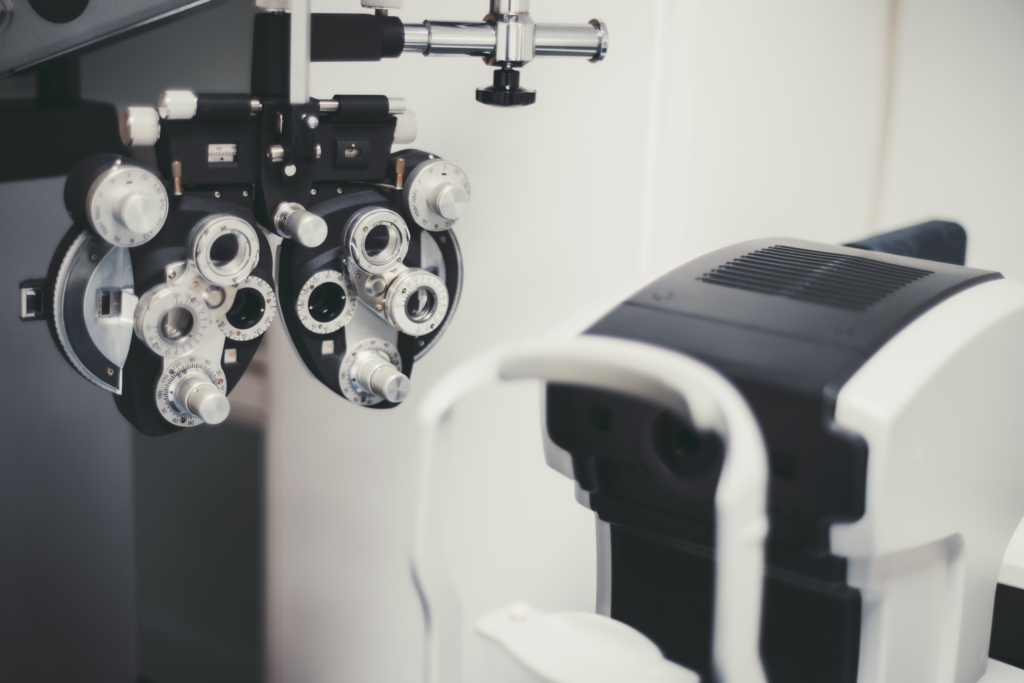
Your visual field is how wide of an area your eye can see when you focus on a central point.
A visual field test can determine if you have blind spots (called scotoma) in your vision and where they are. A scotoma’s size and shape can show how eye disease, or a brain disorder is affecting your vision. For example, if you have glaucoma, this test helps to show any possible side (peripheral) vision loss from this disease.
To do this test, you look into the center of a bowl-shaped instrument called a perimeter. The eye not being tested will be covered with a patch. The testing eye will have your lens prescription placed in front of it to make sure you are seeing as well as possible.
You will be asked to keep looking at a center target throughout the test. Small lights, ranging in brightness will begin to appear in different places throughout the bowl. You will respond to seeing these lights by pressing a button whenever you see a light. The machine tracks which lights you can accurately respond to. Lights will be shown in some areas where the machine knows you can’t see them. This is done deliberately to find what is called the “visual threshold.” You may be concerned because you can’t see every light but rest assured that this test is not designed for you to see every light.
You may blink normally during the test. You may also pause the test if you feel you need to take a break for a moment. The test lasts anywhere from 3-6 minutes per eye.


Visual field testing is an important part of regular eye care for people who are at risk for vision loss from disease and other problems. The following are some of the conditions that may be monitored regularly by their ophthalmologist, who will determine when visual field testing is needed: